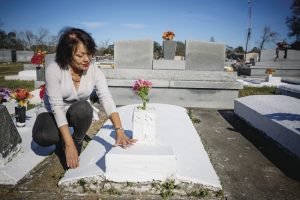Sally Hemings, Thomas Jefferson and the Ways We Tall About Our Past
By Annette Gordon Reed
“Sally Hemings has been described as “an enigma,” the enslaved woman who first came to public notice at the turn of the 19th century when James Callender, an enemy of the newly elected President Thomas Jefferson, wrote with racist virulence of “SALLY,” who lived at Monticello and had borne children by Jefferson. Hemings came back into the news earlier this year, after the Thomas Jefferson Foundation announced plans to restore a space where Hemings likely resided, for a time, at Monticello. A number of news reports as well as comments on social media discussing the plans drew the ire of many readers because they referred to Hemings as Jefferson’s “mistress” and used the word “relationship” to describe the connection between the pair, as if those words inevitably denote positive things. They do not, of course — especially when the word “mistress” is modified by the crucial word ‘enslaved.'”
“George Washington, Slave Catcher”
By Erica Armstrong Dunbar
“Washington almost made it through his two terms in office without a major incident involving his slave ownership. On a spring evening in May of 1796, though, Ona Judge, the Washingtons’ 22-year-old slave woman, slipped away from the president’s house in Philadelphia. At 15, she had joined the Washingtons on their tour of Northern living. She was among a small cohort of nine slaves who lived with the president and his family in Philadelphia. Judge was Martha Washington’s first attendant; she took care of Mrs. Washington’s personal needs.”


